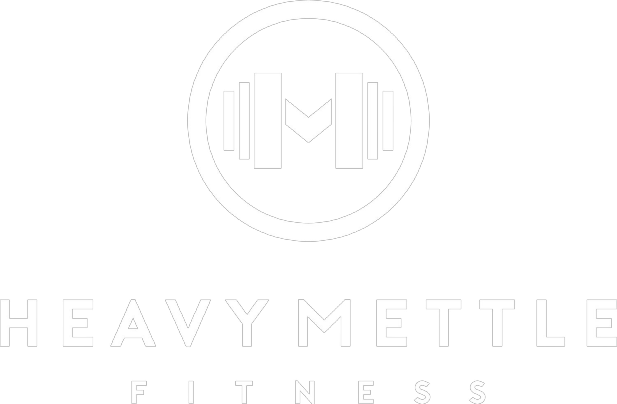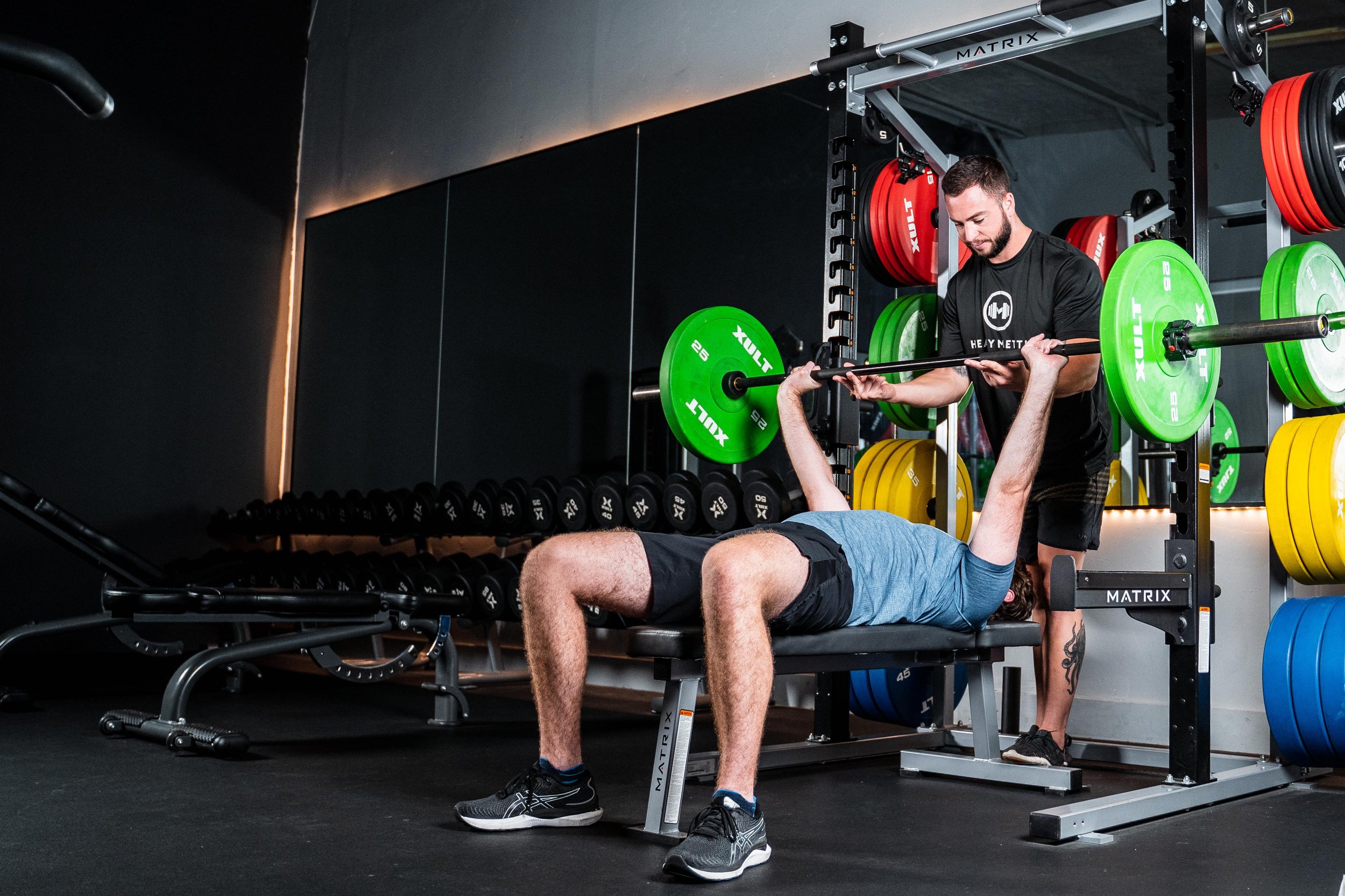Is Pilates Strength Training?
Over the years, Pilates has gained popularity in the fitness industry as a means of improving one's health, mobility, strength, and overall fitness. However, some question its ability to provide significant and transformative results regarding body composition and the extent to which it enhances muscular and musculoskeletal strength.
While Pilates uses resistance as a core feature of its programming, it's important for its participants to understand that Pilates incorporates a relatively low level of resistance training compared to more traditional forms of strength training (i.e., weight training). So, in response to the question, "Is Pilates strength training?" the answer resembles a "yes, but..." in that Pilates is a form of strength training, but if the goal is to optimize muscle volume and strength, there are modes of exercise that are more conducive to achieving those results.
As an Austin, Texas-based personal trainer, I'll share my insights into the topic of whether or not Pilates is strength training to help you make an educated decision regarding the potential future of your fitness journey!
Understanding Pilates
Pilates is generally a full-body approach to increasing strength with light resistance (often body weight or bands). An emphasis on strengthening the core and breathing-related exercises are also selling points of Pilates. Pilates is often viewed by its participants as a means of cultivating a holistic and healthy lifestyle.
Pilates exercises can be done on yoga mats with a focus on bodyweight movements and exercises, and some Pilates studios have Pilates machines that incorporate bands with the specific exercises they target. In my opinion, due to the low resistance nature of the Pilates approach, Pilates is a fine approach for beginners or those in an older demographic where the risk of injury may be higher compared to a younger population.
As I highlight the low-resistance nature of Pilates, my aim is not to portray it as an "easy" mode of exercise. Many first-time Pilates participants find it to be quite challenging. However, just because a form of exercise is "challenging" doesn't mean that it will produce one's desired results. It simply depends on someone's goals!
Pilates is also branded as a means to become more in sync with one's body and physical being. This provides great benefits as it can enhance proprioception (the understanding of one's body in space). This translates to more efficient movement in daily life, potentially reducing the risk of accidents and/or accident-related injuries. In addition, an enhanced proprioception can result in improved posture, which reduces chronically developed injuries and pain.
The diverse approach to strengthening and understanding the body can make Pilates a healthy activity to incorporate into one's fitness and/or wellness regimen.
Defining Strength Training
Strength training, otherwise known as resistance training, is a key component of any well-rounded exercise or fitness regimen. Strength training is focused on improving muscular and structural strength (bones, tendons, ligaments, etc.). An approach to strength training can incorporate various modes of resistance, including free weights, cables, machines, and even bands.
Through a process referred to as "progressive overload," participants aim to increase resistance (or weight) over time to continuously challenge the body in an effort to facilitate gains in muscular strength and size. In a gym setting, weight lifters, regardless of experience level, have access to significant amounts of load and resistance, enabling them to progress with their strength and muscle volume to the extent their bodies will physically allow (with proper training techniques over time)
As a certified personal trainer, I design my clients' training programs to center around resistance training, as this is the mode of exercise that's most conducive to achieving their personal fitness goals. Strength training through the form of weight lifting is an excellent way to burn calories, improve strength, and enhance muscle mass (99% of my clients have goals along these lines).
I explain to clients how weight training is effective for facilitating fat loss due to its ability to burn sufficient calories during a single session and its inherent muscle-building effects. This is because the more muscle we have on our frame, the faster our metabolism will be, thus making it easier to lose body fat and/or maintain a leaner body fat percentage.
We discussed earlier how Pilates is a form of exercise that's sufficient to improve proprioception. Strength training (weight training) is also an excellent way to enhance one's proprioception. As someone gains experience with weight training and begins to better understand how each exercise targets and activates specific muscles on the body, they'll gain a better understanding of where their body is in space and how to better control their movements.
Strength training is not just great for building muscle and strength; there are numerous benefits to a properly structured strength training routine. Many doctors often recommend strength training to their patients as a preventative form of medicine due to the extensive scholarship highlighting the health benefits of a consistent strength training and exercise regimen. In addition to its muscle and strength-enhancing benefits, strength training is also great for enhancing mobility, improving bone density, and strengthening tendons and ligaments. This translates into improved longevity and a reduced risk of injury from everyday activities. Any age demographic can benefit from a properly designed resistance training routine!
Comparing Pilates to Traditional Strength Training
As we've alluded to thus far in this article, the form of resistance training someone may want to participate in should ultimately depend on their individual goals. And to be clear, any form of exercise (when done appropriately and safely) is considered to be better than no exercise at all. So, we're getting into the finer details of what's considered to be optimal based on someone's goals and aspirations.
With that said most fitness professionals will show a preference for a more traditional form of strength training (weight training) than Pilates. While Pilates can be challenging initially, it offers a relatively low ceiling regarding progressive overload (compared to weight training), ultimately hindering the extent to which someone can build muscle and strength.
While Pilates offers exercises that address the entire body, it is definitely more core-centric. Many of the exercises are intended to improve balance and strength by activating the abdominals, obliques, and lower back. This is a great benefit; most of us can benefit from a stronger core. However, because of the most commonly incorporated exercises in a Pilates routine, muscle groups like the chest, back (Rhomboides, Trapezius, and Latissimus Dorsi), and even lower body can be insufficiently engaged (comparatively speaking).
A properly structured weight training routine will be able to address the entire body and mitigate muscular and strength imbalances. Building a proportionate and symmetrical physique is essential for long-term mobility, joint health, and injury prevention.
If someone isn't concerned with muscular development and strength enhancement and is predominantly focused on burning calories and simply staying active, perhaps Pilates can be a great option. However, if someone is looking to make significant changes to body composition in the form of fat loss and/or muscle building, then weight training will be a far superior mode of exercise. Not to mention, any gains in strength in the core (abdominals and lower back) can also be made and even exceeded through weight training.
While strength training can improve mobility through proper form with various exercises, Pilates can be considered superior with regard to improving mobility and pliability. As muscles get stronger over time, they also tend to get tighter. As such, it's essential for avid weight lifters to incorporate various modes of stretching to offset this effect. Pilates and Yoga can be a sufficient means of incorporating regular stretching into someone's routine to promote mobility.
Benefits of Pilates for Strength
Someone's potential to gain strength and/or muscle mass will depend on a couple of different factors. One of the most influential factors is a person's experience level. If someone is a beginner or very new to exercise in general, then they can expect to see increases in strength when beginning a Pilates routine. However, someone who has even moderate experience with lifting weights is much less likely to see any kind of increase in strength upon beginning a Pilates routine. This is because Pilates relies heavily on body weight or banded resistance. These forms of resistance will typically be less challenging and less versatile than other forms of resistance commonly found in a weight room (cables, machines, free weights, etc.).
My Opinion on Pilates and Strength Training
In my opinion, as a certified personal trainer, Pilates can be a reliable option for improving one's overall health and fitness. While traditional strength training (weight lifting) may be a preferred mode of exercise for someone looking to lose weight, build muscle/strength, improve postural imbalances, enhance bone density, etc., Pilates can still offer benefits to the average individual.
The most impactful exercise routine is one that you can stick to long-term. If Pilates offers a means for someone to stick to a fitness regimen for a prolonged period and even turns an exercise routine into a "lifestyle," then that would make Pilates a fantastic option.
If I were to design an optimized fitness regimen for a client who enjoyed Pilates and wanted to incorporate it into their weekly routine, I would encourage them to emphasize strength training (weight training) throughout the week and incorporate one to two Pilates sessions as a means to burn calories and strengthen the core. If someone is looking to maximize strength and optimize body composition, Pilates shouldn't be the focal point of a training routine.
Pilates is Strength Training (However...)
So, is Pilates strength training? Yes, Pilates is a form of strength training. However, if someone is trying to maximize their potential to improve strength and build muscle mass, there are far superior modes of strength training.
As a certified personal trainer, I help clients improve body composition (build muscle and lose body fat), and my preferred mode of exercise to achieve these goals is weight training. Lifting weights will offer a superior means of achieving body composition-related goals.
For beginners, Pilates can be a great introduction to strength training as it may offer a means of reducing excessive muscle soreness, and some may find a Pilates studio less intimidating than a commercial gym. For those with more strength training experience or those looking to add variety to their core workouts, Pilates can serve as a supplement to weight training in an attempt to create a well-rounded fitness regimen.
Please note that I am not a medical professional and you should always consult with your doctor before beginning an exercise and/or nutrition regimen.







